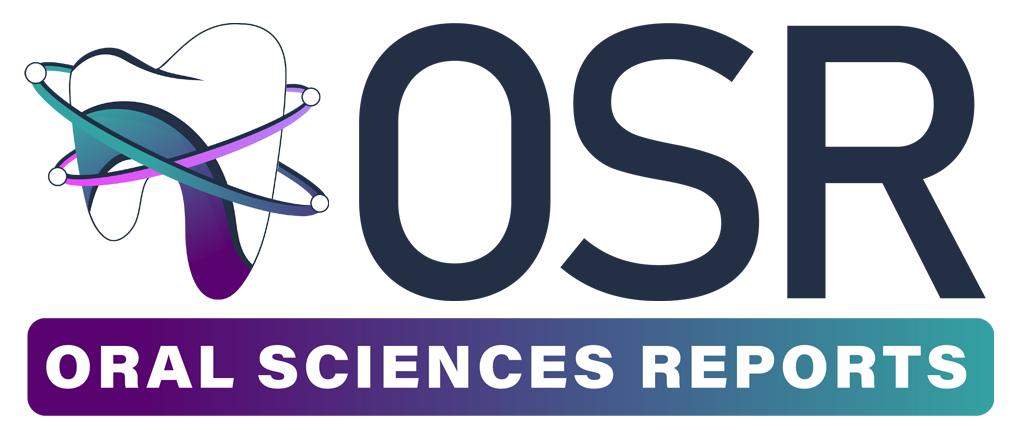Droplet Spread Pattern Produced by Magnetostrictive Scaling with and without a High-volume Evacuator
Objectives: To study the droplet spread pattern from magnetostrictive scaling and the effect of a high-volume evacuator (HVE) on spread reduction.
Methods: Magnetostrictive scaling was simulated on a dental unit using dye-stained water. Gridded filter paper was installed at five vertical heights. Each height consisted of a center point with six radial directions, each divided into four horizontal distances. Eight minutes of scaling was performed in triplicate for two groups, scaling with HVE (H) and scaling without HVE (NH). The stained paper grid cells were counted, and the number and percentage of stained cells were calculated. Statistical comparison of H and NH was performed using SPSS.
Results: The 2 and 4 o’clock directions showed the highest number of stained areas in both groups. Pieces of paper located 30 cm from center horizontally in all directions from floor level up to 30 cm above the scaler tip were completely stained in both groups. The furthest distance that droplets spread was 120 cm from center at 2 and 4 o’clock in the NH group. The highest vertical spread was 45 cm above the tip in both groups and it was significantly decreased in the H group. The total stained area was reduced by 3.15 % when using HVE.
Conclusions: Droplet spread from magnetostrictive scaling can reach 120 cm from the dental unit in the 2 and 4 o’clock directions. An HVE with adequate airflow rates is necessary for reducing contamination risk.
- Dong E, Du H, Gardner L. An interactive web-based dashboard to track COVID-19 in real time. Lancet Infect Dis. 2020;20(5):533-4.
- World Health Organization. Coronavirus disease (COVID-19): How is it transmitted? [Internet]. Geneva: World Health Organization; 2021 Dec 23 [updated 2021 Dec 23; 2022 Oct 8]. Available from: https://www.who.int/news-room/questions-and-answer...
- Virdi MK, Durman K, Deacon S. The Debate: what are aerosol-generating procedures in dentistry? a rapid review. JDR Clin Trans Res. 2021;6(2):115-27.
- Bentley EM. The value of ultrasonic cleaners in dental practice. Br Dent J. 1994;177(2):53-6.
- Gupta G, Mitra D, Ashok K, Gupta A, Soni S, Ahmed S, et al. Efficacy of preprocedural mouth rinsing in reducing aerosol contamination produced by ultrasonic scaler. J Periodontol. 2014;85(4):562-8.
- Veena HR, Mahantesha S, Joseph PA, Patil SR, Patil SH. Dissemination of aerosol and splatter during ultrasonic scaling: a pilot study. J Infect Public Health. 2015;8(3):260-5.
- Pierre-Bez AC, Agostini-Walesch GM, Bradford Smith P, Hong Q, Hancock DS, Davis M, et al. Ultrasonic scaling in COVID-era dentistry: a quantitative assessment of aerosol spread during simulated and clinical ultrasonic scaling procedures. Int J Dent Hyg. 2021;19(4):474-80.
- Puljich A, Jiao K, Lee RSB, Walsh LJ, Ivanovski S, Han P. Simulated and clinical aerosol spread in common periodontal aerosol-generating procedures. Clin Oral Investig. 2022;26(9):5751-62.
- Purohit B, Priya H, Acharya S, Bhat M, Ballal M. Efficacy of pre-procedural rinsing in reducing aerosol contamination during dental procedures. J Infect Prev. 2009;10(6):190-2.
- Chuang CY, Cheng HC, Yang S, Fang W, Hung PC, Chuang SY. Investigation of the spreading characteristics of bacterial aerosol contamination during dental scaling treatment. J Dent Sci. 2014;9(3):294-6.
- Devker NR, Mohitey J, Vibhute A, Chouhan VS, Chavan P, Malagi S, et al. A study to evaluate and compare the efficacy of preprocedural mouthrinsing and high volume evacuator attachment alone and in combination in reducing the amount of viable aerosols produced during ultrasonic scaling procedure. J Contemp Dent Pract. 2012;13(5):681-9.
- Kaur R, Singh I, Vandana KL, Desai R. Effect of chlorhexidine, povidone iodine, and ozone on microorganisms in dental aerosols: randomized double-blind clinical trial. Indian J Dent Res. 2014;25(2):160-5.
- Ionescu AC, Cagetti MG, Ferracane JL, Garcia-Godoy F, Brambilla E. Topographic aspects of airborne contamination caused by the use of dental handpieces in the operative environment. J Am Dent Assoc. 2020;151(9):660-7.
- Desarda H, Gurav A, Dharmadhikari C, Shete A, Gaikwad S. Efficacy of high-volume evacuator in aerosol reduction: truth or myth? a clinical and microbiological study. J Dent Res Dent Clin Dent Prospects. 2014;8(3):176-9.
- Harrel SK, Barnes JB, Rivera-Hidalgo F. Reduction of aerosols produced by ultrasonic scalers. J Periodontol. 1996;67(1):28-32.
- King TB, Muzzin KB, Berry CW, Anders LM. The effectiveness of an aerosol reduction device for ultrasonic scalers. J Periodontol. 1997;68(1):45-9.
- Muzzin KB, King TB, Berry CW. Assessing the clinical effectiveness of an aerosol reduction device for the air polisher. J Am Dent Assoc. 1999;130(9):1354-9.
- Ou Q, Placucci RG, Danielson J, Anderson G, Olin P, Jardine P, et al. Characterization and mitigation of aerosols and spatters from ultrasonic scalers. J Am Dent Assoc. 2021;152(12):981-90.
- Koch M, Graetz C. Spray mist reduction by means of a high-volume evacuation system-results of an experimental study. PLoS One. 2021;16(9):e0257137.
- Li X, Mak CM, Ma KW, Wong HM. Evaluating flow-field and expelled droplets in the mockup dental clinic during the COVID-19 pandemic. Phys Fluids (1994). 2021;33(4):047111.
- Horsophonphong S, Chestsuttayangkul Y, Surarit R, Lertsooksawat W. Efficacy of extraoral suction devices in aerosol and splatter reduction during ultrasonic scaling: A laboratory investigation. J Dent Res Dent Clin Dent Prospects. 2021;15(3):197-202.
- Yang M, Chaghtai A, Melendez M, Hasson H, Whitaker E, Badi M, Sperrazza L, Godel J, Yesilsoy C, Tellez M, Orrego S, Montoya C, Ismail A. Mitigating saliva aerosol contamination in a dental school clinic. BMC Oral Health. 2021;21(1):52.
- Suwandi T, Nursolihati V, Sundjojo M, Widyarman AS. The efficacy of high-volume evacuators and extraoral vacuum aspirators in reducing aerosol and droplet in ultrasonic scaling procedures during the COVID-19 pandemic. Eur J Dent. 2022; Epub ahead of print.
